Example of problems created by electric cables in offices
In this article, with the aid of a 3D model, we show the problems created by electric cables in an office.
The following drawing represents an office with open desks. The cables are pending in front of the desk and the cable that goes into the wall socket is lying on the floor.

The first problem is the long cable that goes from the wall socket to the multi-socket in front of the desk. This cable is usually longer than needed so it can bend in many ways and go under the chairs, near to the person who is sitting at the desk.

This cable passes also near a big metal object like the metal shelves or the metal cupboard, and it induces alternate electric field on them, so the electric field spreads over a larger area.
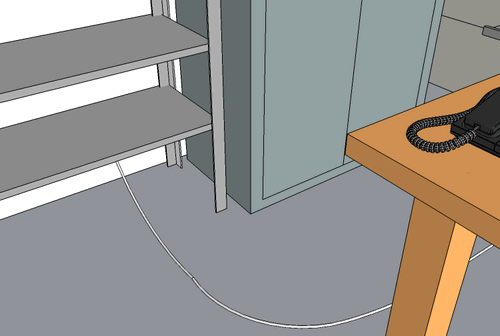
There is a long piece of power cord pending vertically behind the PC, at few centimeters from it, and so it will induce alternating electric field on the PC chassis.
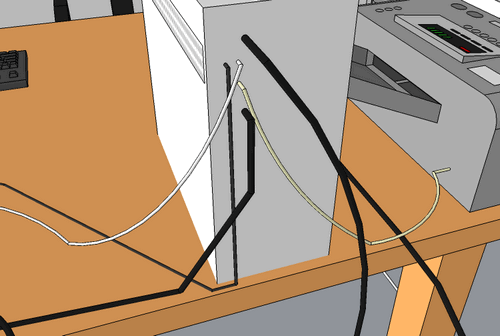
The VGA cable of the monitor crosses the power cord of the same monitor, so the electric field of the power cord induces electric vibrations into the ground shield of the VGA cable, which is connected to the monitor internal metal box.
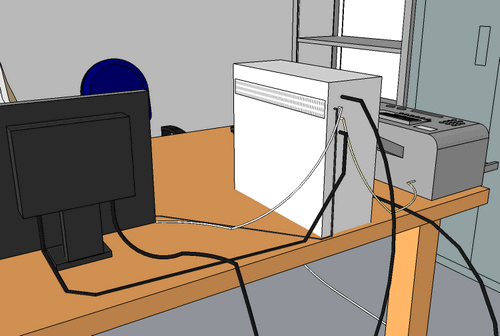
Also the keyboard and mouse cords pass very near to the power cords of the PC and of the monitor.
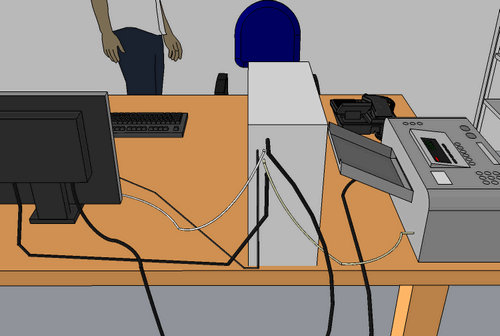
The power cord of the printer crosses the printer's signal cable and this creates additional electric noise.
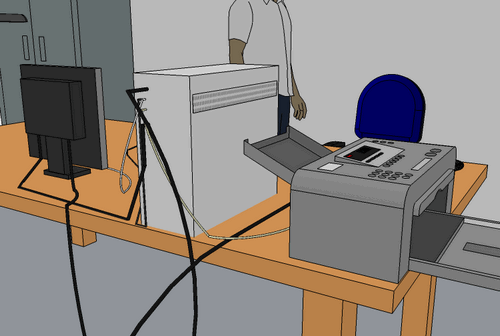
On the desk there is a desktop lamp with a power cord, the base of the lamp contains a transformer. The power cord brings electric field and the transformer creates a strong magnetic field. Some lamps have also the problem of the metal arms that carry the current, see bad desktop lamps article.
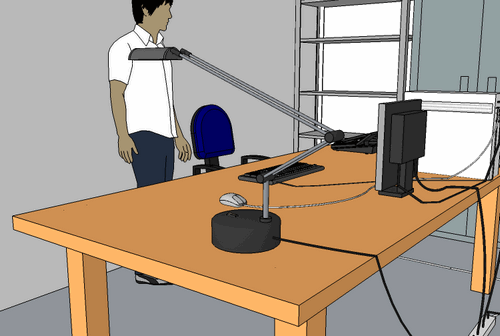
Other kind of offices would have desks with closed front so the cables are not visible but they are still there, and they are also nearer to the person.
In an office like this there are many other sources of electromagnetic fields, first of all the computer monitor and the fluorescent lights on the ceiling. The electromagnetic fields created by power cords however can be eliminated by using shielded power cords.